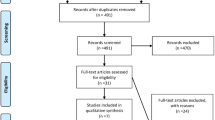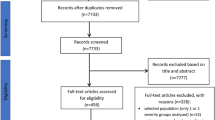Abstract
Background
Extreme transaminase elevation > 1000 international units per liter (IU/L) is typically caused by hepatocellular injury due to ischemia, drugs, or viral infection. Acute choledocholithiasis can also present with marked transaminase elevation mimicking severe hepatocellular injury, contrary to the presumed cholestatic pattern.
Methods
We searched PubMed/Medline, EMBASE, Cochrane Library, and Google Scholar for studies reporting the proportion of marked elevation of alanine aminotransferase (ALT) or aspartate aminotransferase (AST) > 1000 IU/L in patients with common bile duct (CBD) stones. A proportion meta-analysis with a corresponding 95% confidence interval (CI) was used to pool the proportion of patients with extreme transaminase elevation. I2 was used to examine heterogeneity. We used CMA software utilizing a random effect model for statistical analysis.
Results
Three studies (n = 1328 patients) were included in our analysis. The reported frequency of ALT or AST > 1000 IU/L in choledocholithiasis patients ranged between 6 and 9.6%, with pooled frequency of 7.8% (95% CI 5.5–10.8%, I2 61%). The frequency of patients with ALT or AST > 500 IU/L was higher, ranging between 28 and 47%, with pooled frequency of 33.1% (95% CI 25.3–42%, I2 88%).
Conclusion
This is the first meta-analysis to study prevalence of severe hepatocellular injury in patients with CBD stones. Results revealed that approximately one-third of patients with choledocholithiasis present with ALT or AST > 500 IU/L. Furthermore, levels > 1000 IU/L are not uncommon. An elaborate work-up for alternative etiologies of severe transaminase elevation is likely unwarranted in cases with clear evidence of choledocholithiasis.



Similar content being viewed by others

References
Giannini EG, Testa R, Savarino V. Liver enzyme alteration: a guide for clinicians [Internet]. C. Can. Med. Assoc. J. 2005;172:367.
Bangaru S, Thiele D, Sreenarasimhaiah J et al. Severe elevation of liver tests in choledocholithiasis: an uncommon occurrence with important clinical implications [Internet]. J. Clin. Gastroenterol. 2017;51:728–733.
Lee WM, Seremba E. Etiologies of acute liver failure [Internet]. Curr. Opin. Crit. Care 2008;14:198–201.
Xu HM, Chen Y, Xu J et al. Drug-induced liver injury in hospitalized patients with notably elevated alanine aminotransferase [Internet]. World J. Gastroenterol. 2012;18:5972.
Ellis G, Goldberg DM, Spooner RJ et al. Serum enzyme tests in diseases of the liver and biliary tree [Internet]. Am. J. Clin. Pathol. 1978;70:248–258.
Nathwani RA, Kumar SR, Reynolds TB et al. Marked elevation in serum transaminases: an atypical presentation of choledocholithiasis [Internet]. Am. J. Gastroenterol. 2005;100:295–298.
Björnsson HK, Olafsson S, Bergmann OM et al. A prospective study on the causes of notably raised alanine aminotransferase (ALT) [Internet]. Scand. J. Gastroenterol. 2015;51:594–600. https://doi.org/10.3109/00365521.2015.1121516.
Campos S, Silva N, Carvalho A et al. A new paradigm in gallstones diseases and marked elevation of transaminases: an observational study [Internet]. Ann. Hepatol. 2017;16:285–290.
Hoy D, Brooks P, Woolf A et al. Assessing risk of bias in prevalence studies: modification of an existing tool and evidence of interrater agreement [Internet]. J. Clin. Epidemiol. 2012;65:934–939.
Rothstein H, Sutton AJ, Borenstein M. Publication bias in meta-analysis: prevention, assessment and adjustments, Wiley; 2005; 356.
Björnsson HK, Björnsson ES. A significant proportion of patients with choledocholithiasis have markedly elevated alanine aminotransferase [Internet]. Scand. J. Gastroenterol. 2019;54:1155–1159.
Ohlsson EG, Rutherford RB, Haalebos MMP et al. The effect of biliary obstruction on hepatosplanchnic blood flow in dogs [Internet]. J. Surg. Res. 1970;10:201–208.
Souza ME, Castro-e-Silva Júnior O, Picinato MA et al. Serum transaminase levels in the acute phase of chronic extrahepatic cholestasis [Internet]. Brazilian J. Med Biol. Res. Rev. Bras. Pesqui. Medicas Biol. 1990;23:995–997.
Isogai M, Hachisuka K, Yamaguchi A et al. Etiology and pathogenesis of marked elevation of serum transaminase in patients with acute gallstone disease [Internet]. HPB Surg. 1991;4:95–107.
Mossberg SM, Ross G. High serum transaminase activity associated with extrahepatic biliary disease: a clinical and pathologic study of sixty patients with serum glutamic-oxalacetic transaminase levels of 300 units or greater. Gastroenterology 1963;45:345–353.
ASGE Standards of Practice Committee, Buxbaum JL, Abbas Fehmi SM et al. ASGE guideline on the role of endoscopy in the evaluation and management of choledocholithiasis. Gastrointest Endosc. 2019;89:1075-1105.e15. https://doi.org/10.1016/j.gie.2018.10.001.
Yurgaky-Sarmiento J, Otero-Regino W, Gómez-Zuleta M. Elevated transaminases: a new tool for the diagnosis of choledocholithiasis. A case control study [Internet]. Rev. Colomb. Gastroenterol. 2020;35:319–328.
Gianpiero Manes A, Paspatis G, Aabakken L et al. Endoscopic management of common bile duct stones: European society of gastrointestinal endoscopy (ESGE) guideline [Internet]. Endoscopy 2019;51:472–491. https://doi.org/10.1055/a-0862-0346.
Narula VK, Fung EC, Overby DW, Richardson W, Stefanidis D. Clinical spotlight review: management of choledocholithiasis—a sages publication. SAGES; 2021.
Acknowledgments
None to report.
Funding
This research received no funding or financial arrangement.
Author information
Authors and Affiliations
Contributions
Conception, design: MFM. Writing the initial draft: MFM, NW, KF. Study search, review, and selection: MFM, KE, and MA. Data collection and synthesis: MFM, KE. Statistical analysis and generation of figures: MFM. Manuscript submission and handling: NW. All authors: interpretation of data, drafting, and critical revision of the article. All authors approved the final version for publication.
Corresponding author
Ethics declarations
Conflict of interest
None to report.
Additional information
Publisher's Note
Springer Nature remains neutral with regard to jurisdictional claims in published maps and institutional affiliations.
Supplementary Information
Below is the link to the electronic supplementary material.
Rights and permissions
Springer Nature or its licensor (e.g. a society or other partner) holds exclusive rights to this article under a publishing agreement with the author(s) or other rightsholder(s); author self-archiving of the accepted manuscript version of this article is solely governed by the terms of such publishing agreement and applicable law.
About this article
Cite this article
Mohamed, M.F.H., Elfert, K., Wadhavkar, N. et al. Choledocholithiasis Can Present with Marked Transaminases Elevation: Systematic Review and Meta-Analysis. Dig Dis Sci 68, 3428–3435 (2023). https://doi.org/10.1007/s10620-023-07981-7
Received:
Accepted:
Published:
Issue Date:
DOI: https://doi.org/10.1007/s10620-023-07981-7



